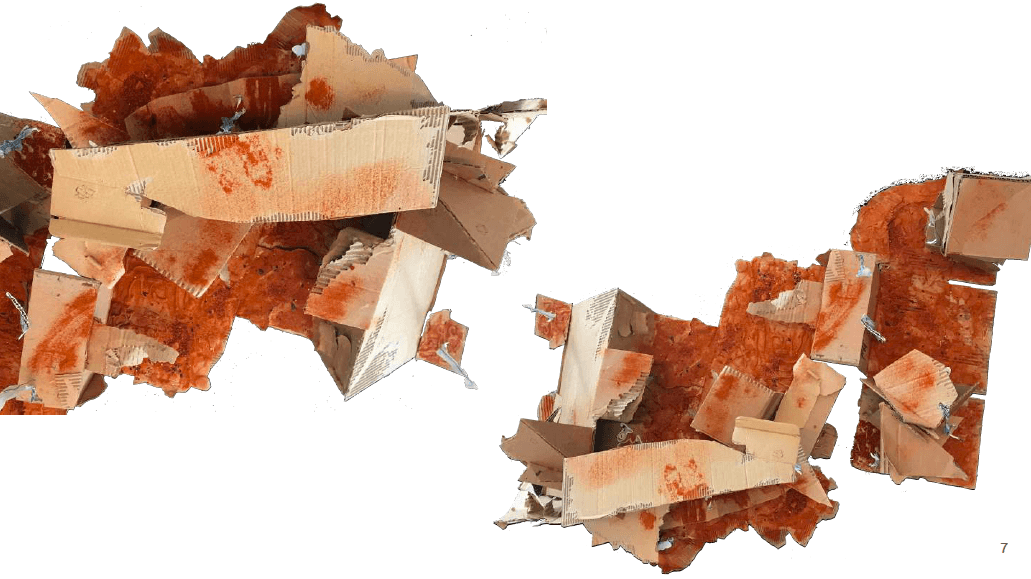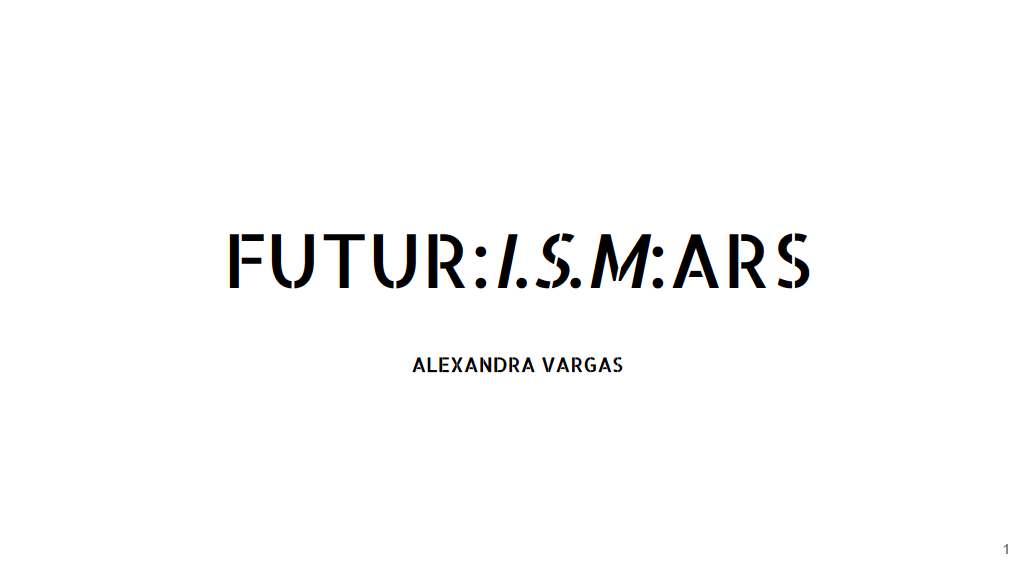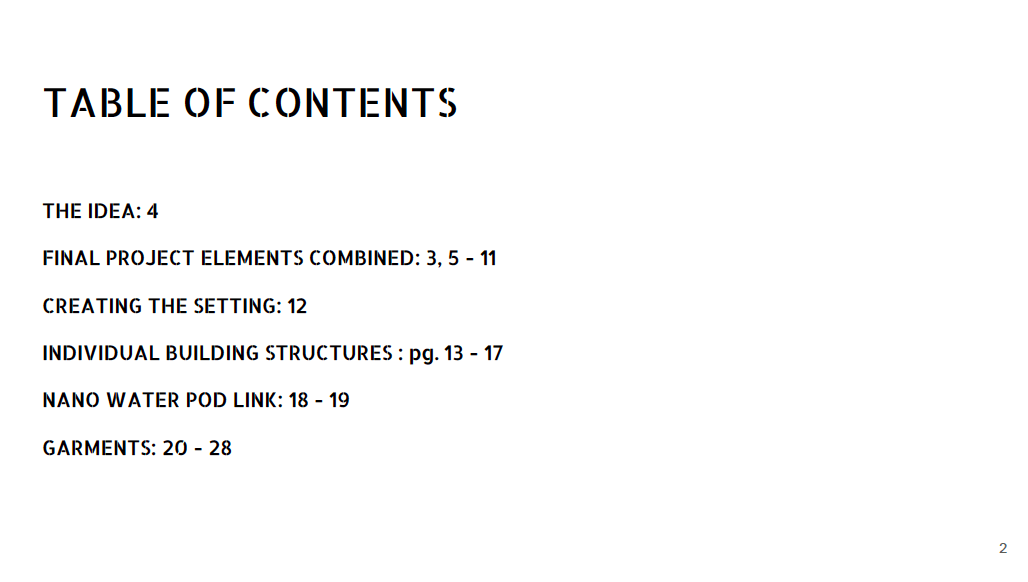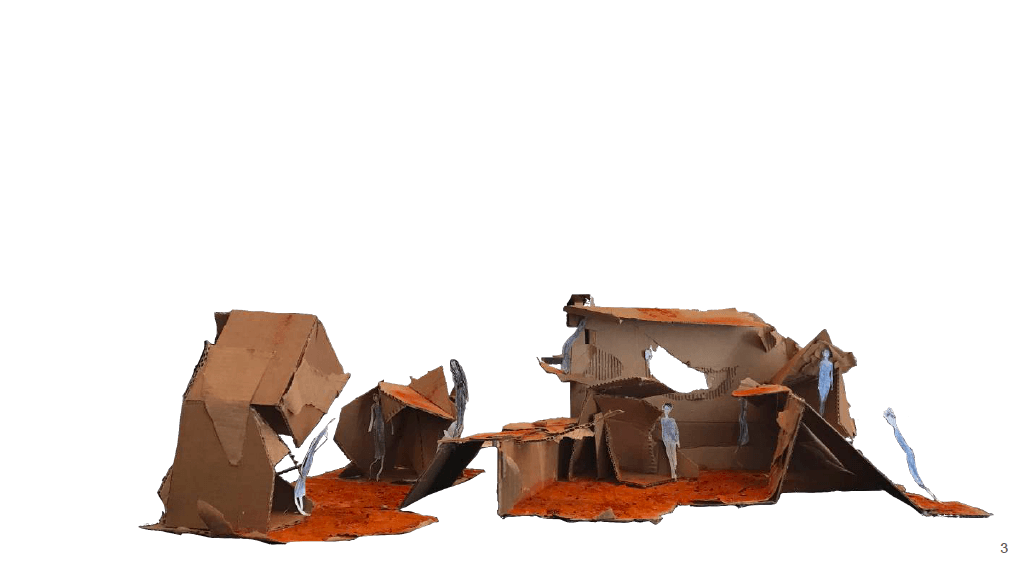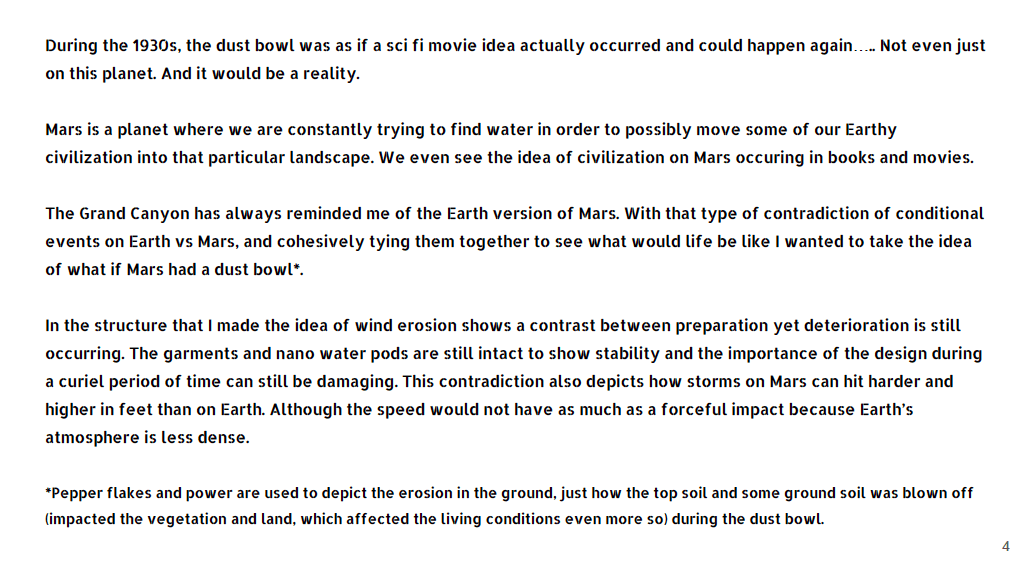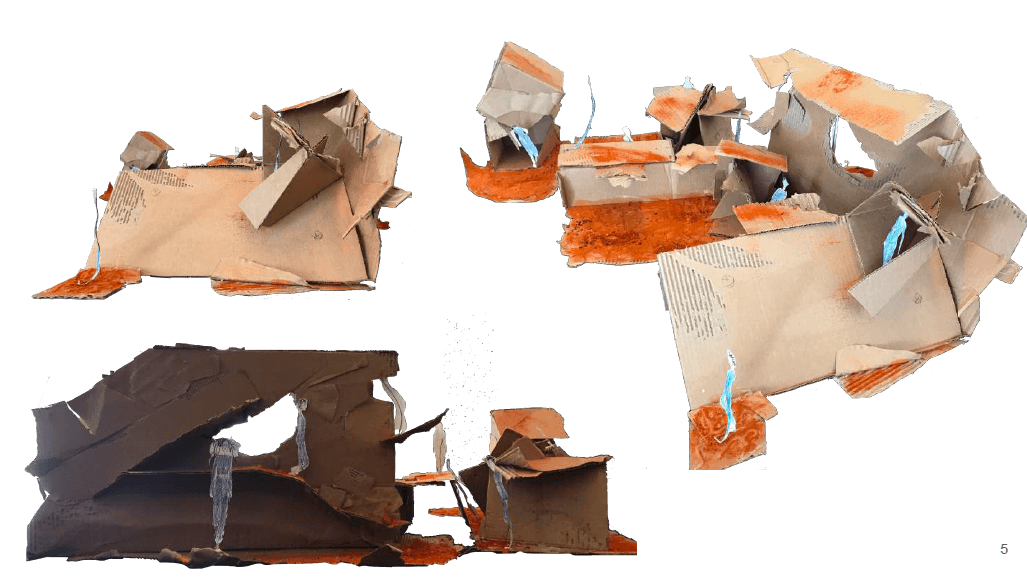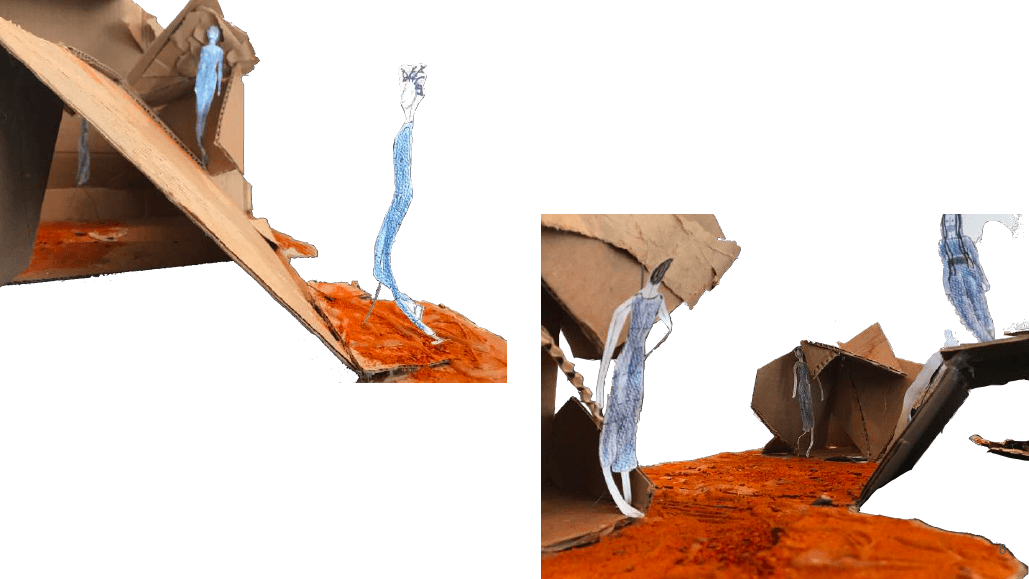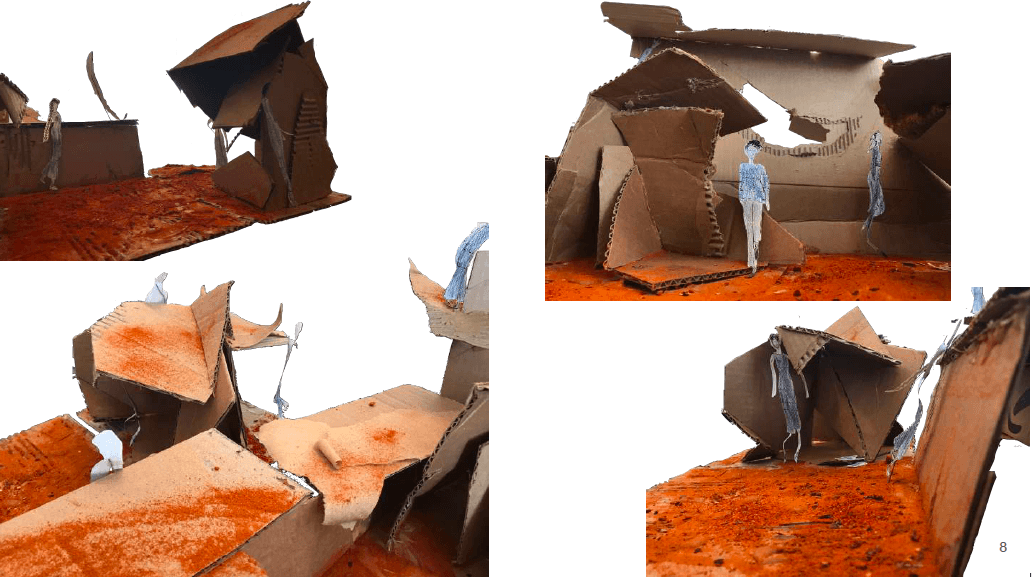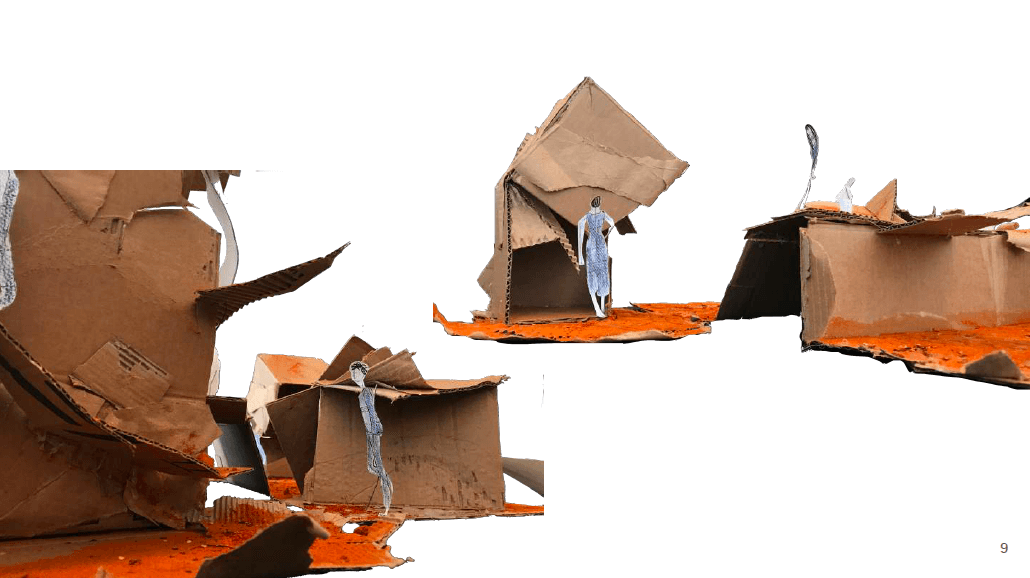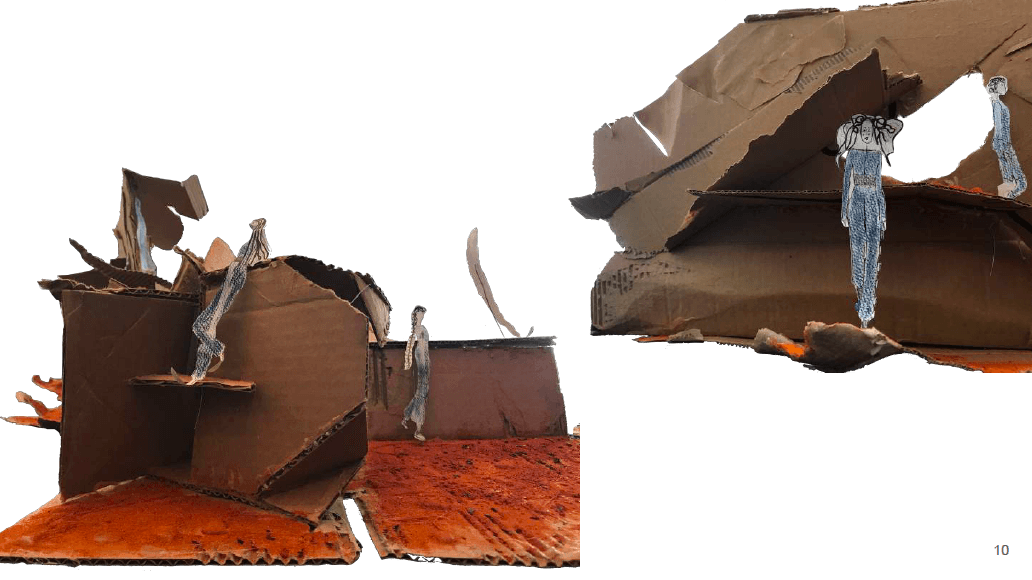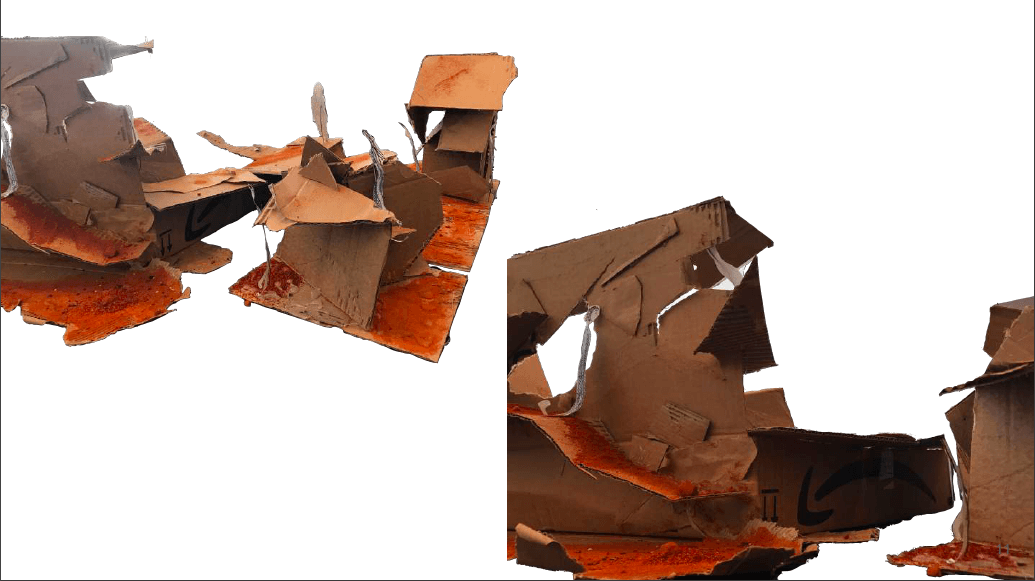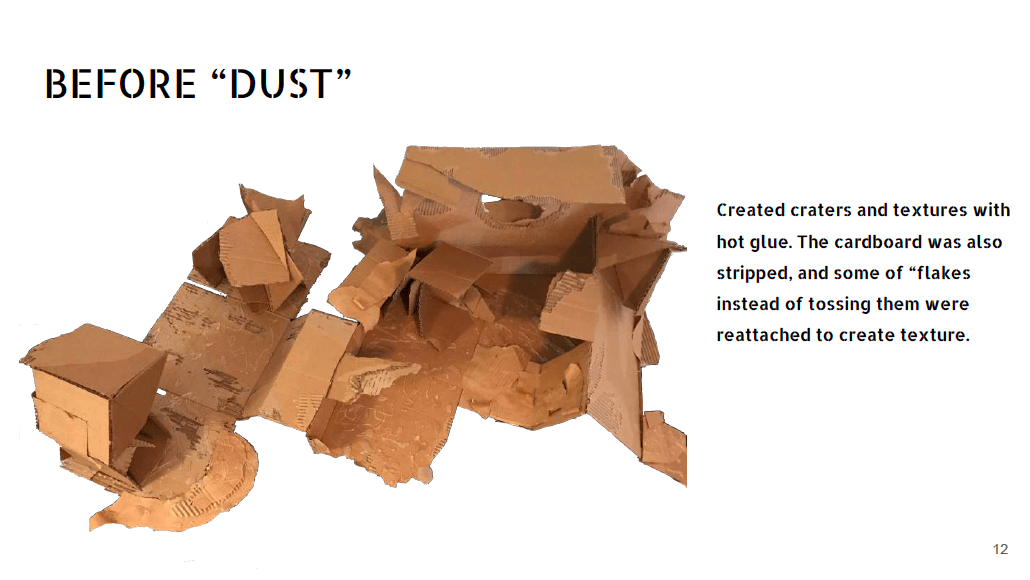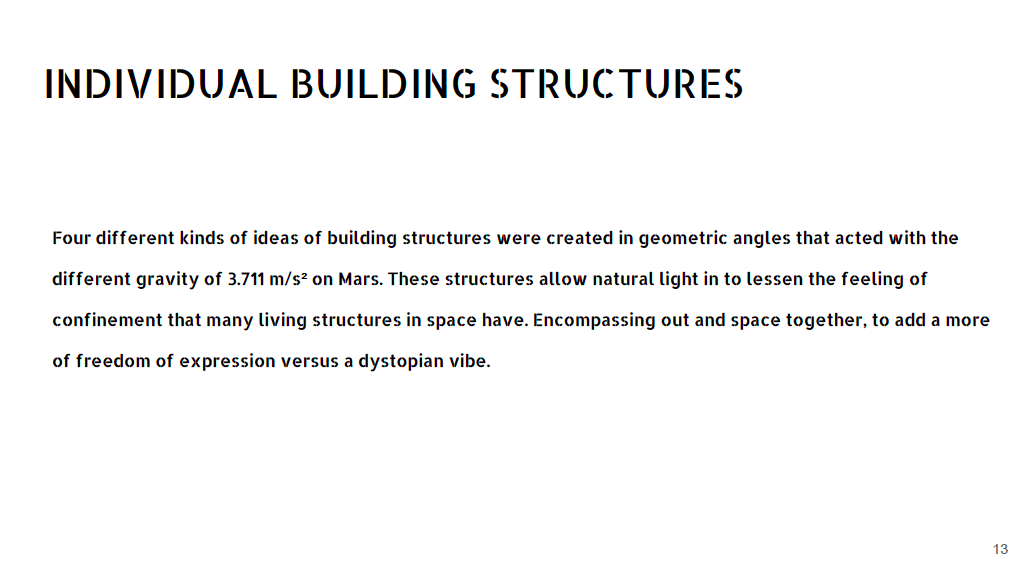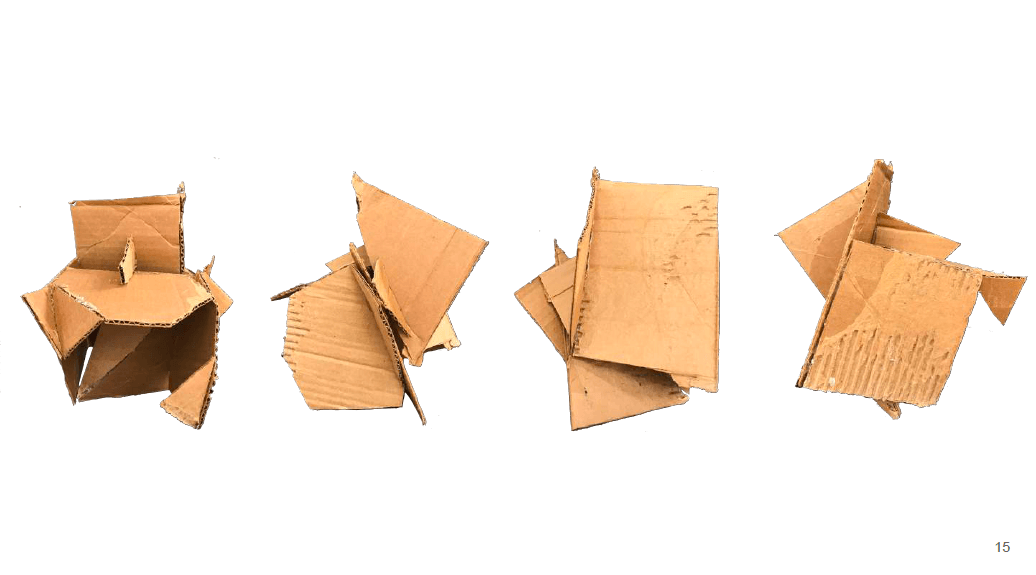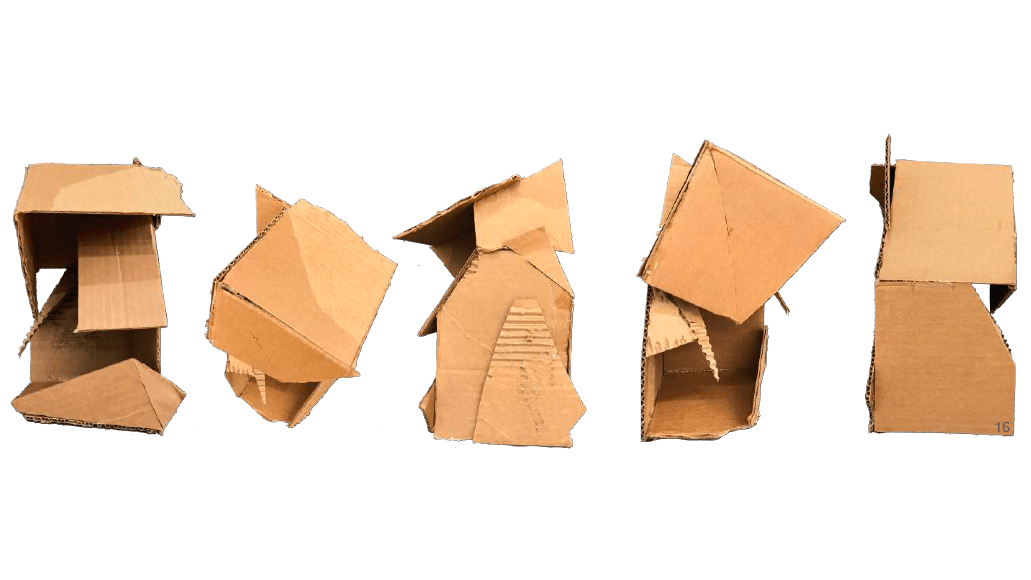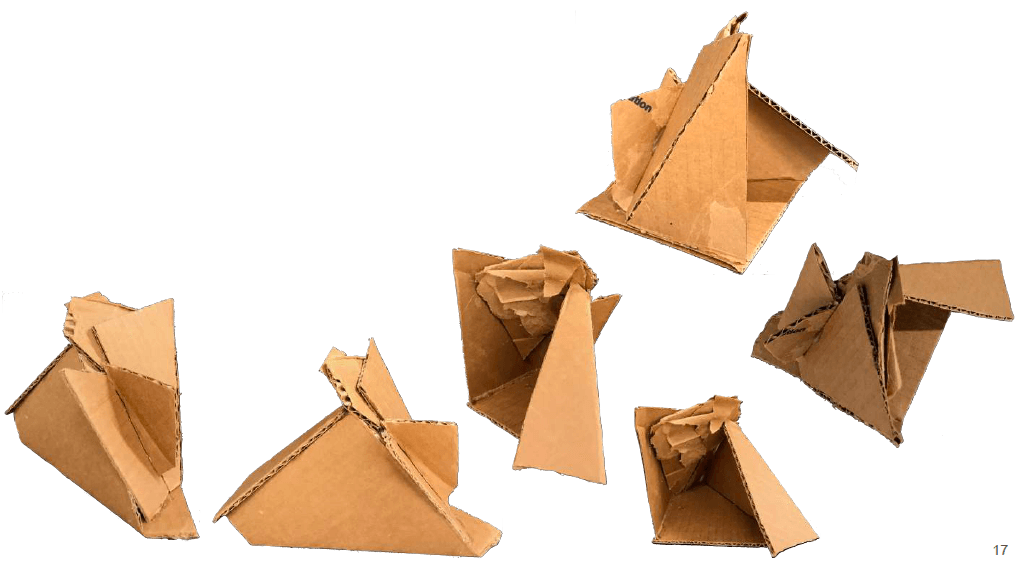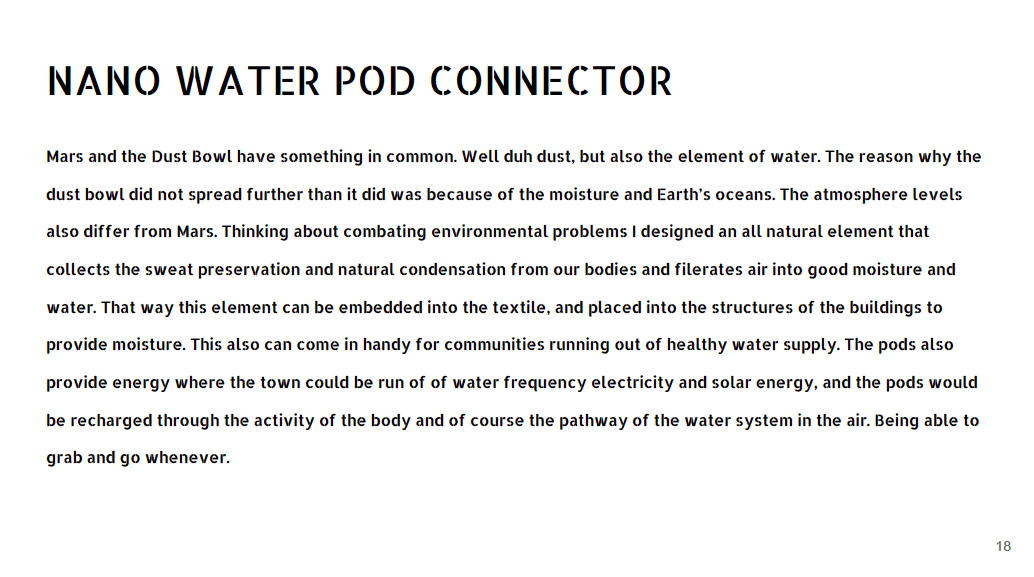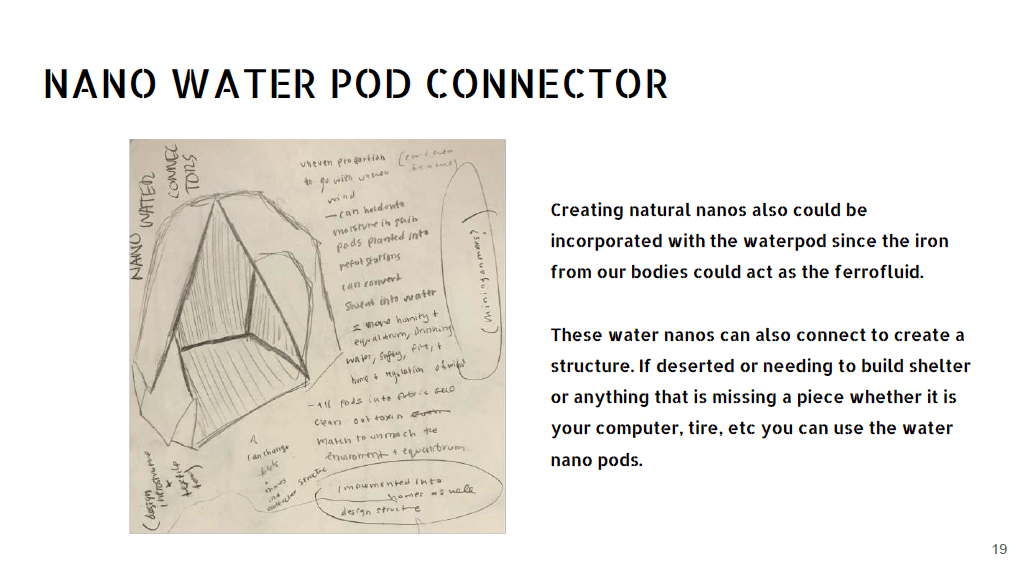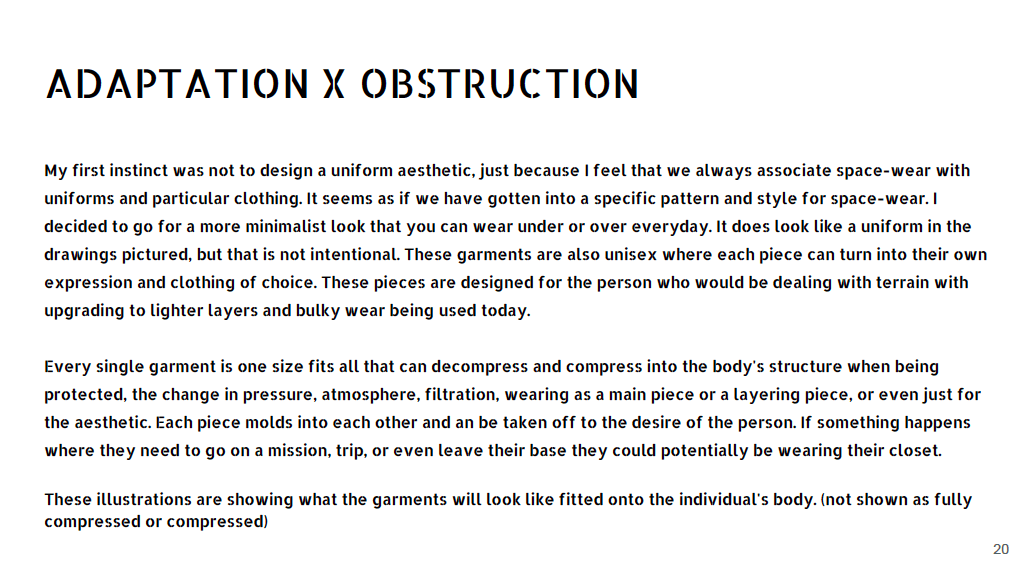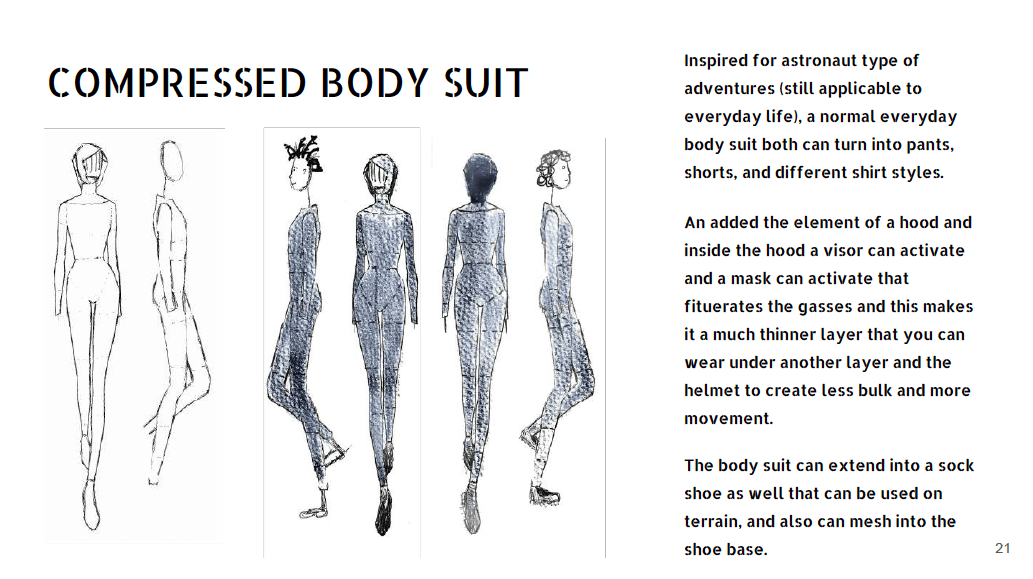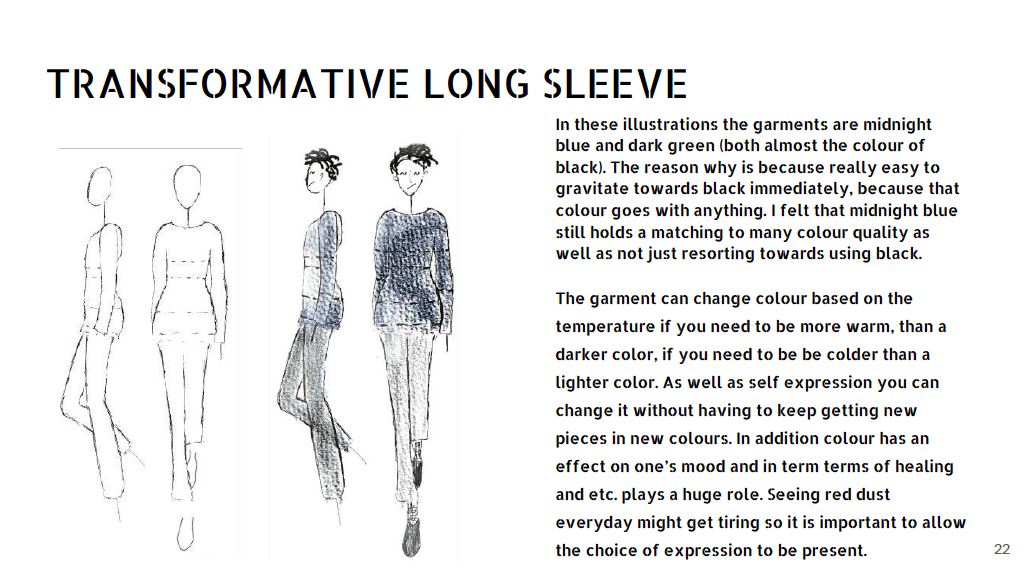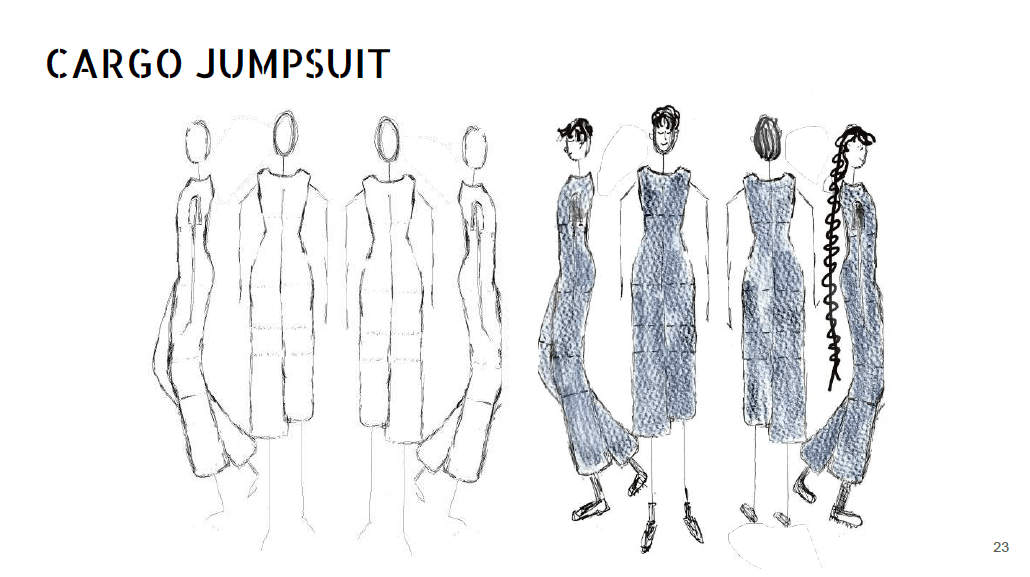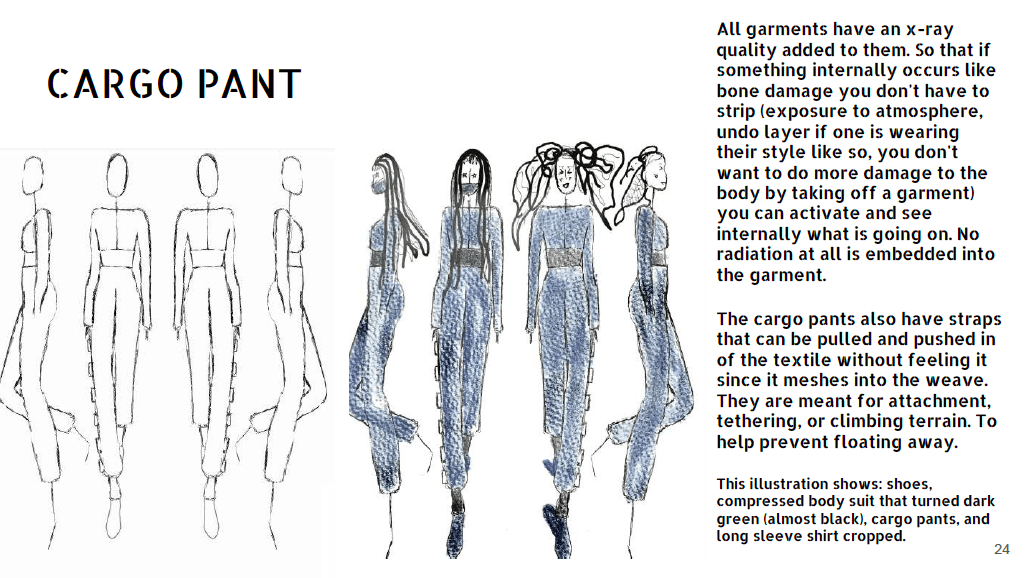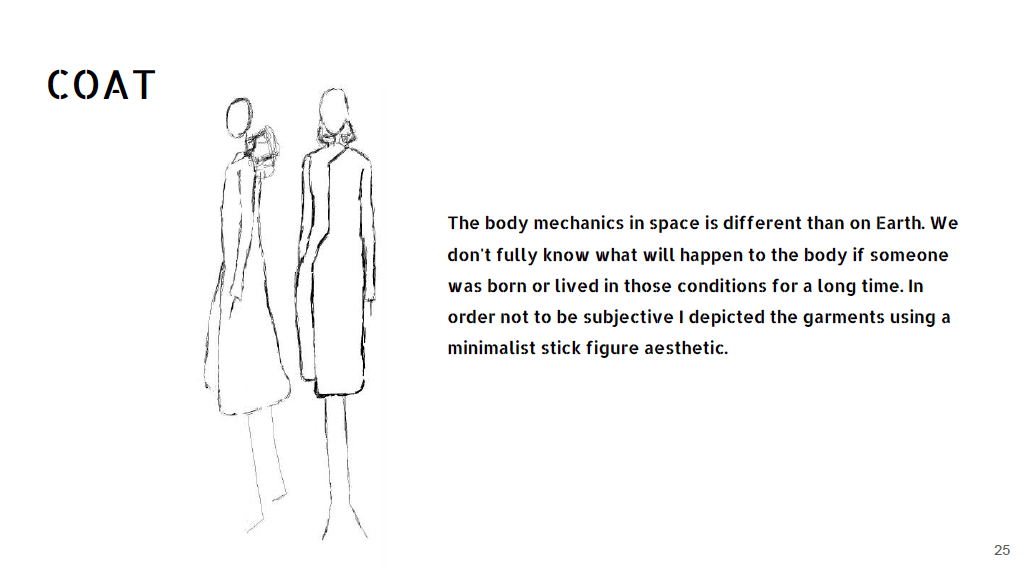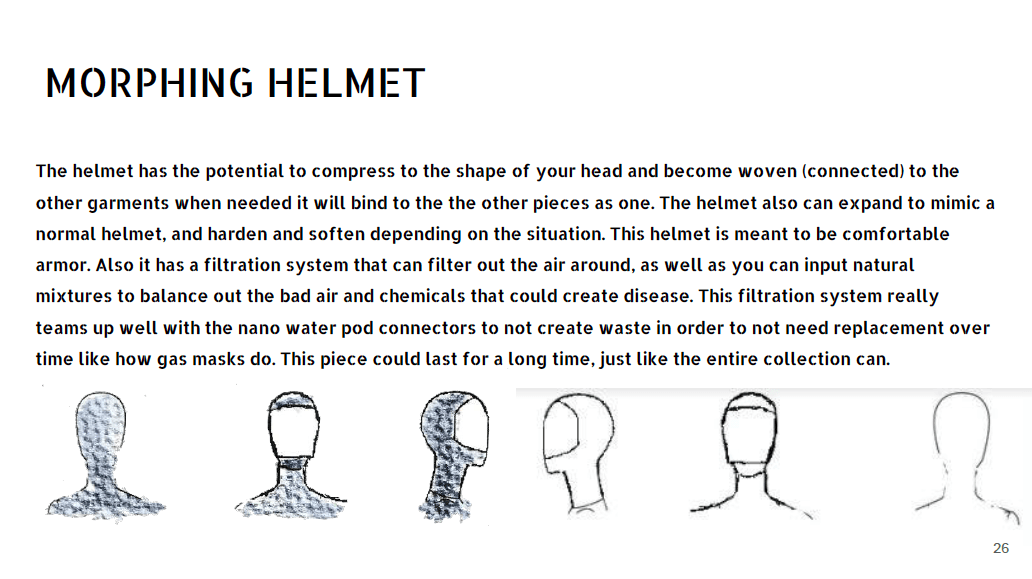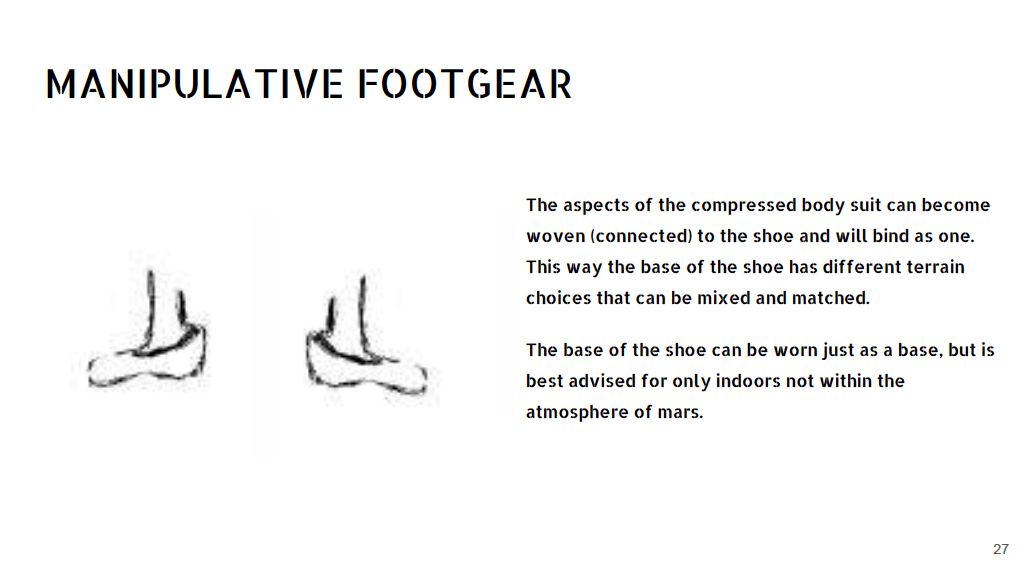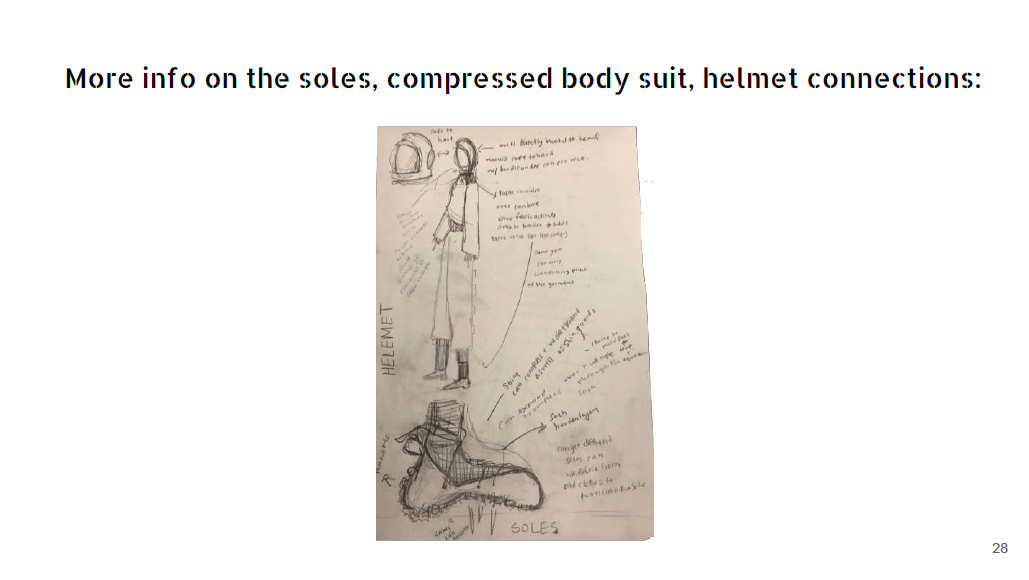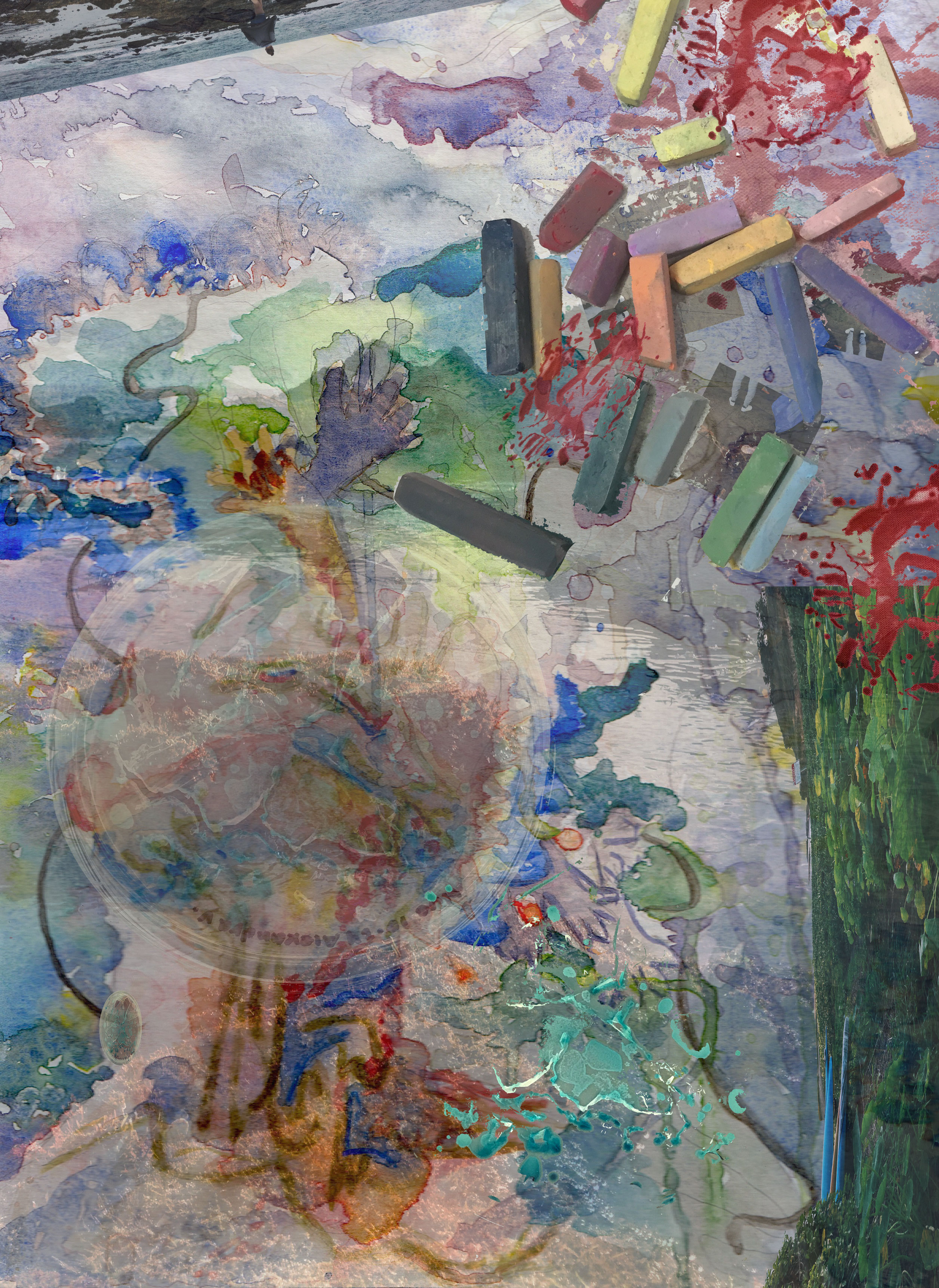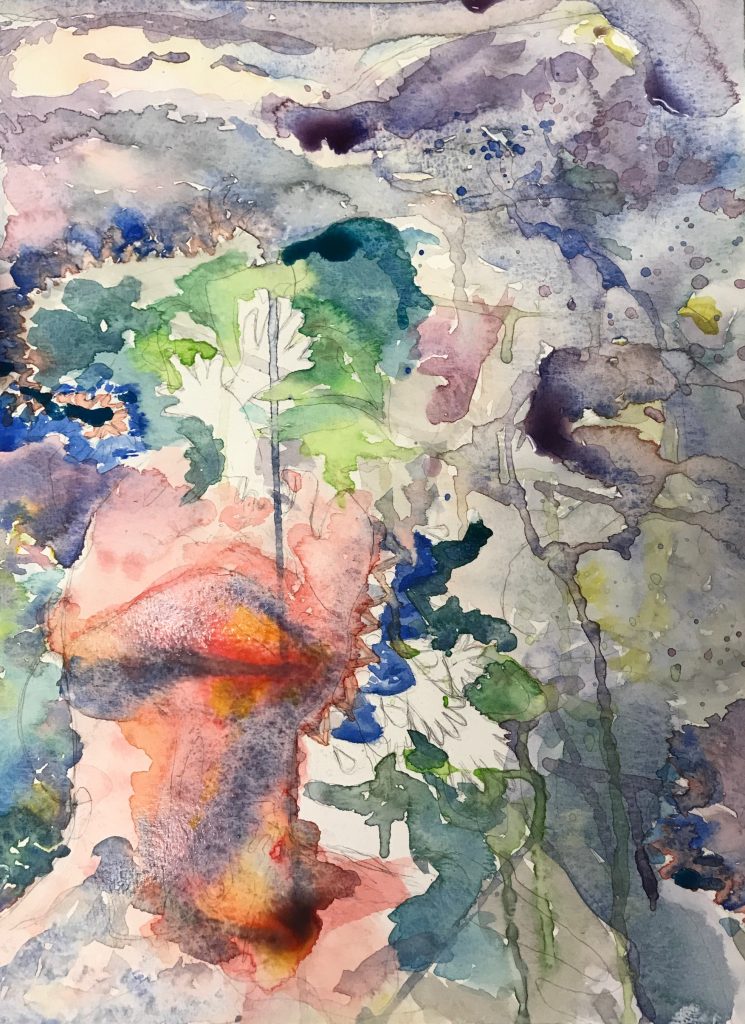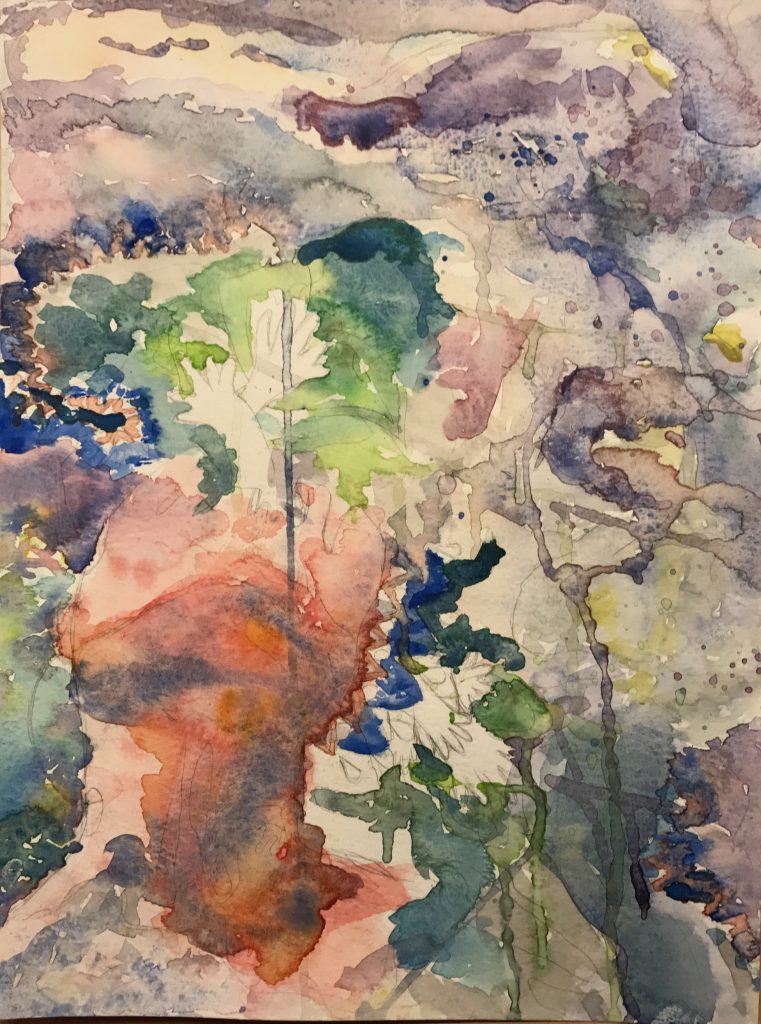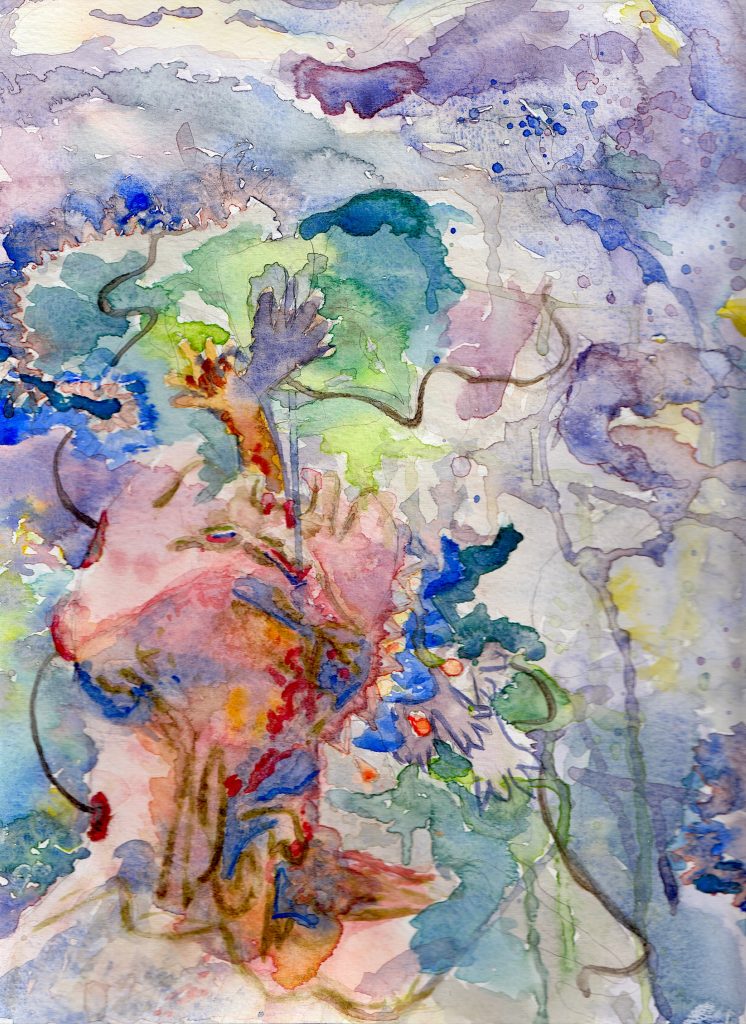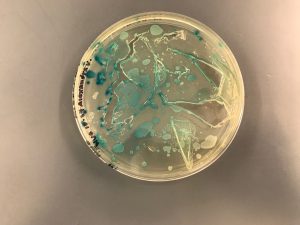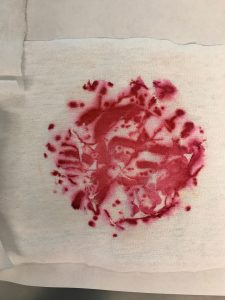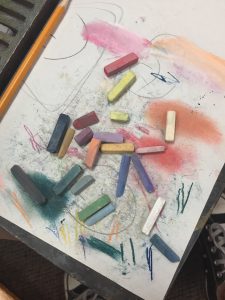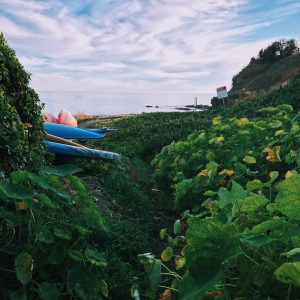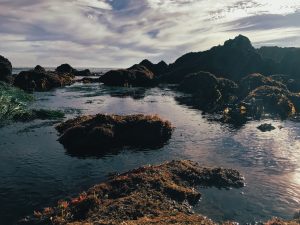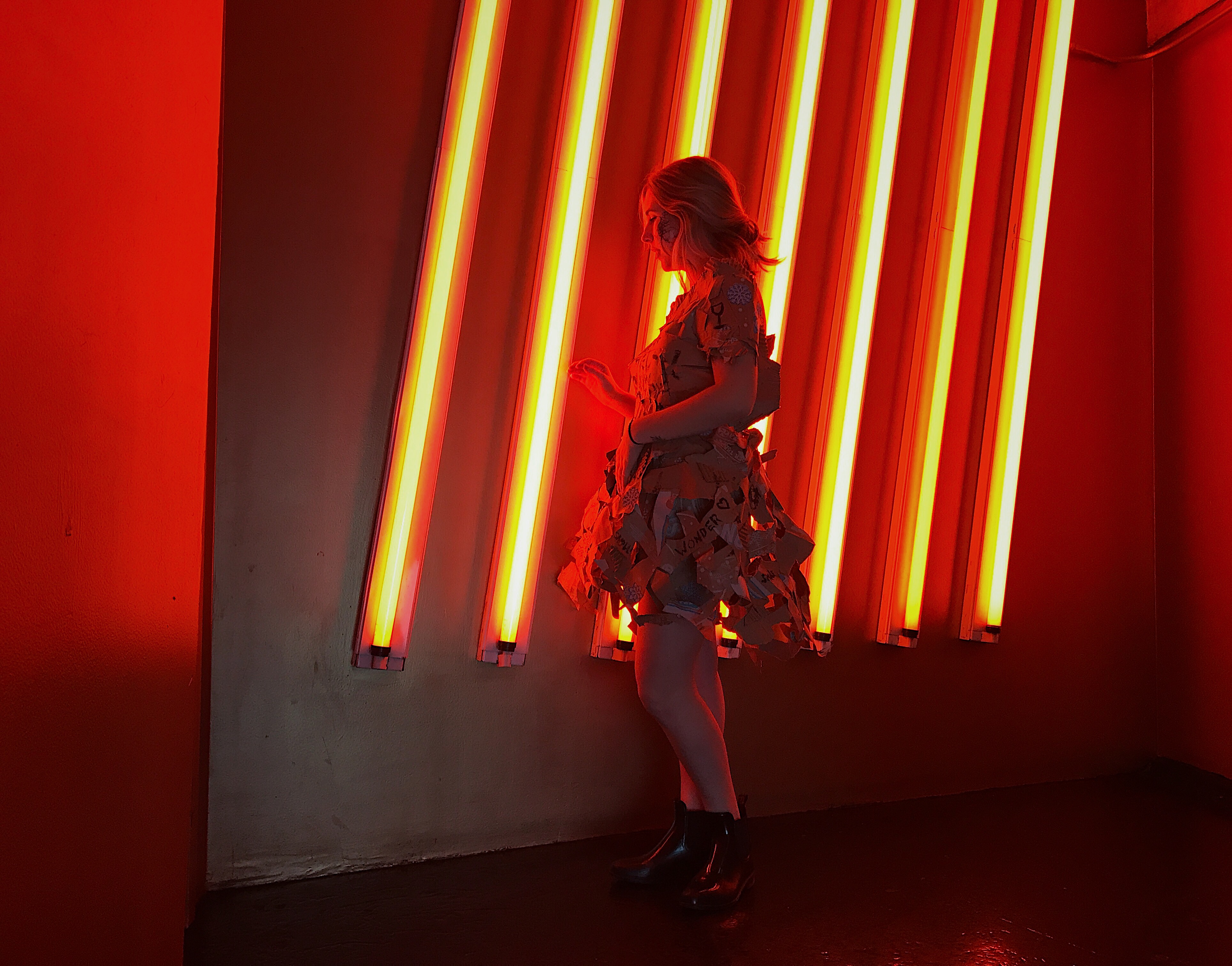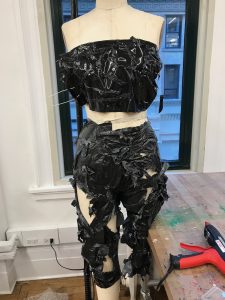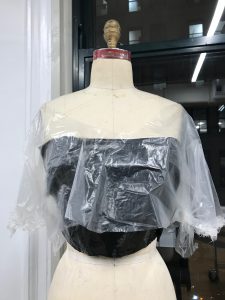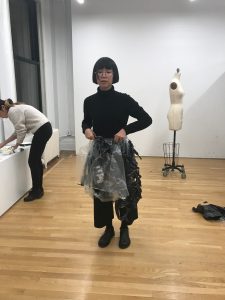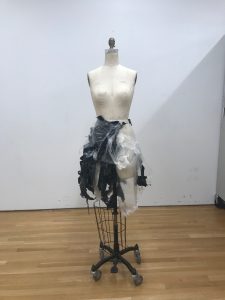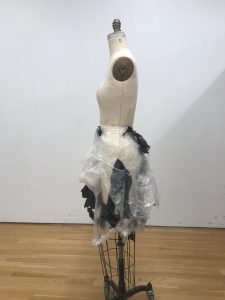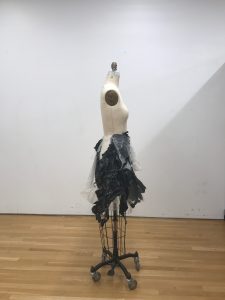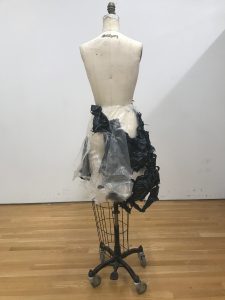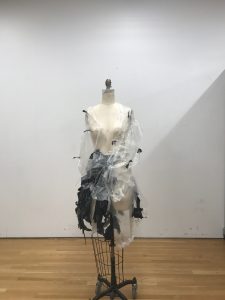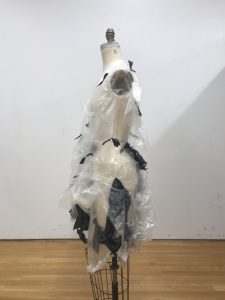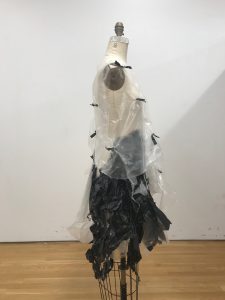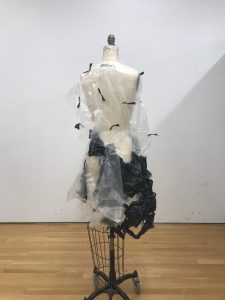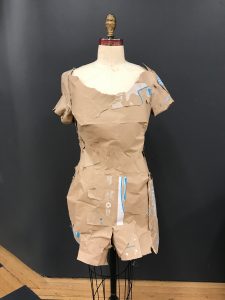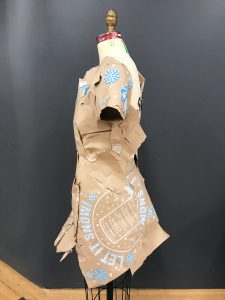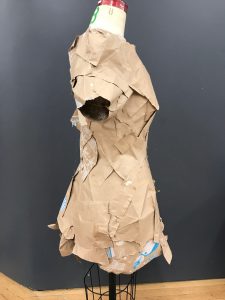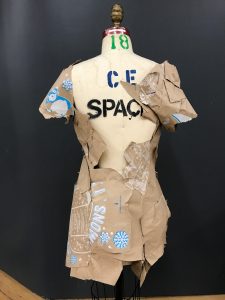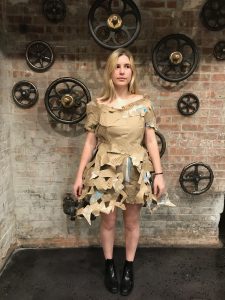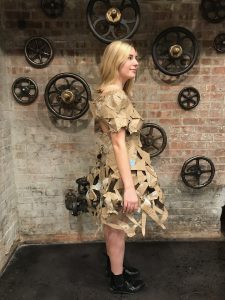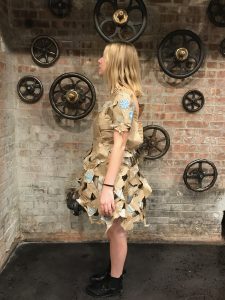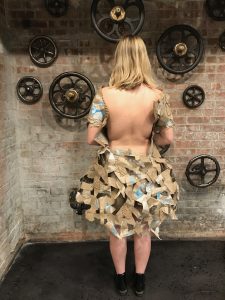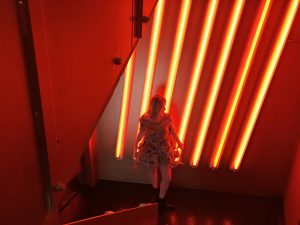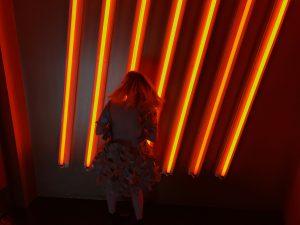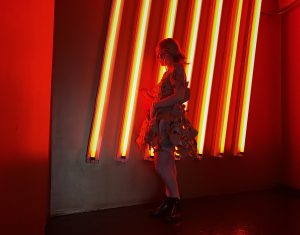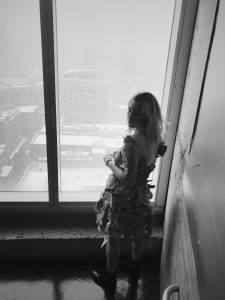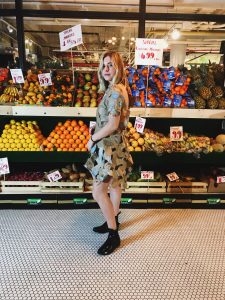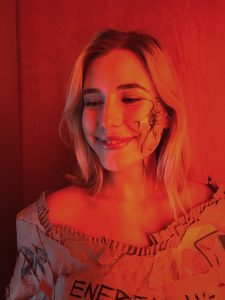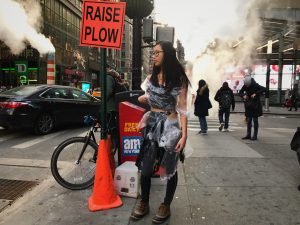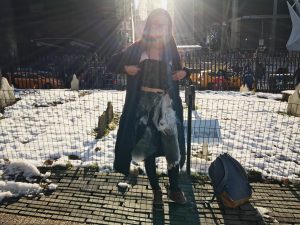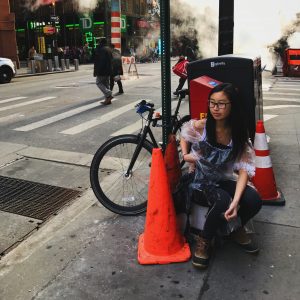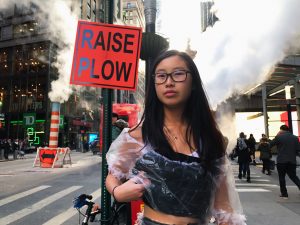lang
Links of Correlations ~ 1st Year
I was so excited to be able to paint what I heard. Usually I just listen to a song and paint the everything I hear in terms of colors I feel and see, and frequencies. But this time I went for more of a realistic picture I saw in my head. The song I listened to was “La Baie” covered by Clara Luciani. I saw a scene at night in France where it was dark with glimmers of random lights of purple and yellow where a girl had her head into titled up at an odd angle. My watercolor ended up becoming more abstract, but I will talk more about that later.
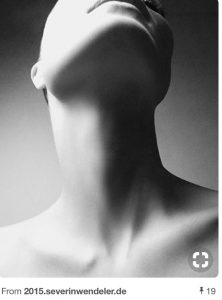
When drawing the composition: I used this neck as a reference to draw the girl looking up. I did not draw the entire face and started to fracksome of it off as if she was dissolving into the errie and mysterious lights floating around her. I had hands that were like flower petals and leaves come out of her, as if there was something in her that was releasing into the air but also connecting her which is why there are holes with stuff coming out of her
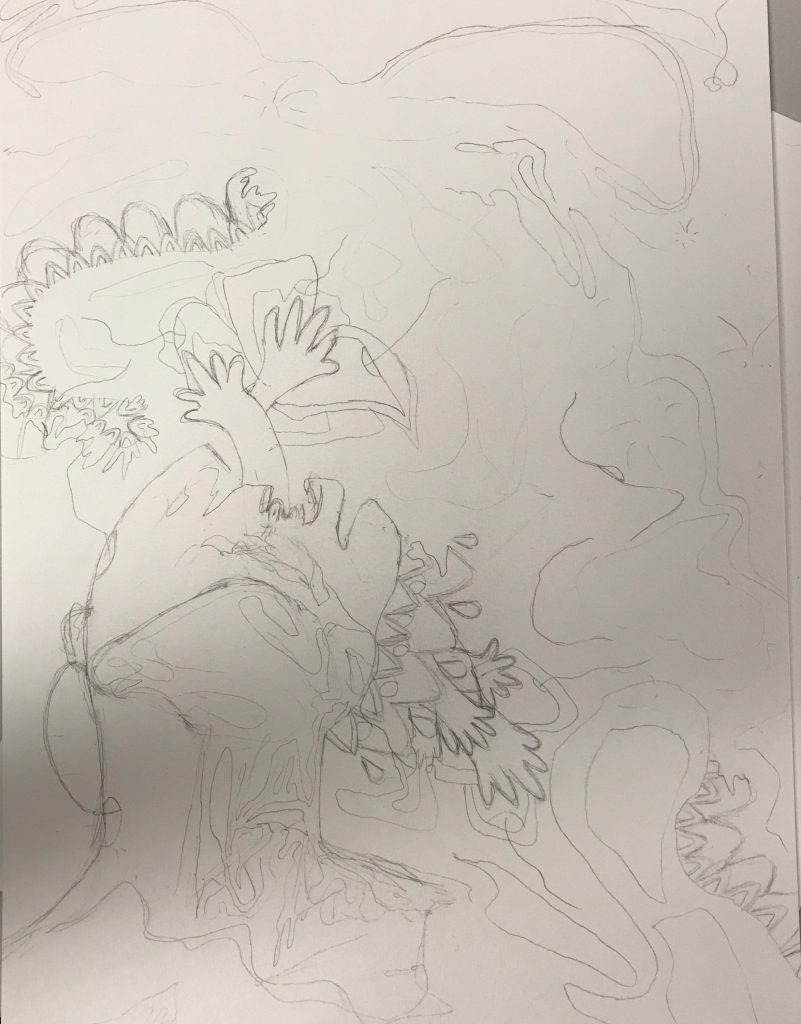
When doing the watercolor I tried to depict the colors and let them flow a lot by using the wet on wet technique. I used greens and blues to contrast the yellow and purple too. The yellow in the purple represents the lights, the green is like more of an organic plant feel, and the red and gold is like intoxication and danger in a way.
I was going to go over some parts with a micron pen to make more of the features realistic, but then I thought that would take a way from the free flowing affect. It would of created another affect too, and I would of liked it, but now when have adding the photos I am glad I choose to experiment without relying on the micron lines to paint more of the picture. My roommates said they say various things, and not a face.We were joking that the piece was like a mishmash of inkblot tests. They saw different things from each other, and its cool cause we all feel different connections. We all interpret uniquely, and that is special!
- final watercolor
. . .
Contact sheet: all these photos I took and I thought that these colors and application of textures would mesh well with the watercolor’s aesthetic.
All these photos I took, and I wanted to keep it that way to create a personal making element instead of using other people’s pictures from the internet.
- bacteria I painted
- bacteria on fabric after I painted it
- pastels from when I was using them
- the greenery of plants at the ocean
- tide pools full from a high tide several hours before
The feet on the street:
- I used the fill and opaque settings to manipulate how much the color would show through.
- This fit the theme of a night in urban France that I imagined and I wanted it to be hidden swirling in the back of her mind. That is why it looks hidden.
The ocean/tidepool pictures:
- For this layer I cut out the background and sky for two of the pictures.
- I used the fill and opaque settings to manipulate how much the color would show through.
- The water and rock formation texture can add an interesting effect of the idea of dried watercolor but wet water combining. Also, the one of my friend creates a paradoxical world element and the grass creates a juxtaposition. I did not realize till when trying to find an example of the song, that it was a cover song. The original song was done by Metronomy titled: “The Bay”. In this video it has a lot of the ocean, and I already knew the song had to do with the bay but it was just a coincidence because I did not add the ocean pictures for that reason. Also when seeing the video it reminded me of some of the beaches where I live. The pictures I took of the beach add an element of home to me, but these beaches don’t fully remind me of the beach in the video.
Pastels:
- For this layer I cut out the background.
-
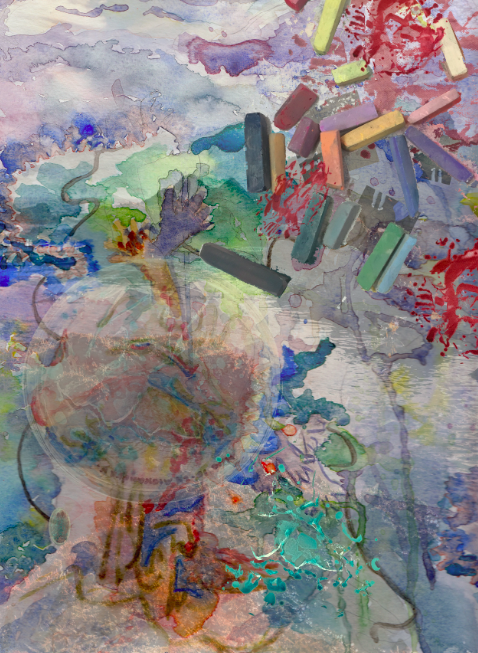
How I was going to complete the piece, but then did not because Alaiyo challenged me add more.
I wanted to created a cool texture and effect as if they were laid on top of the picture and someone was creating and working on the composition. Showing how the mind continuously works, and the frequencies of sound is everywhere whether we can or cannot hear it or feel it.
Bacteria:
- For this layer I cut out the background and some elements.
- I used the fill and opaque settings to manipulate how much the color would show through.
- These pictures are from bacteria I painted last semester. It reminded me of the effect of the splatters I did when water coloring. I thought it would be cool to add into the piece since it was like something was overtaking the girl and the girl was contributing to that. Bacteria does that same thing. We contribute, but it also gets a grasp on to us, and can spread. The red bacteria was transferred onto a cloth, and I thought that texture was cool to add. I overlaid it on the holes I made on the girl, with the blue petri dish on top. I also put it in the corner of the composition and on top of the pastels to create the spreading effect. Pastels hold into the skin and spread as well. Therefore I thought it was fitting. The blue bacteria was while Iwas in the process of painting it. I thought it would be cool to show the idea of containment, breaking, spreading, and moving. I overlaid the dish on top of the girl’s face, and positioned it so that some of the things coming out of her looked like it was coming out of some of the cracks in the goo within the dish. I also eliminated the dish and just had the blue bacteria to show it fully out onto the collarbone of the skin and not in the dish anymore.
The final piece:
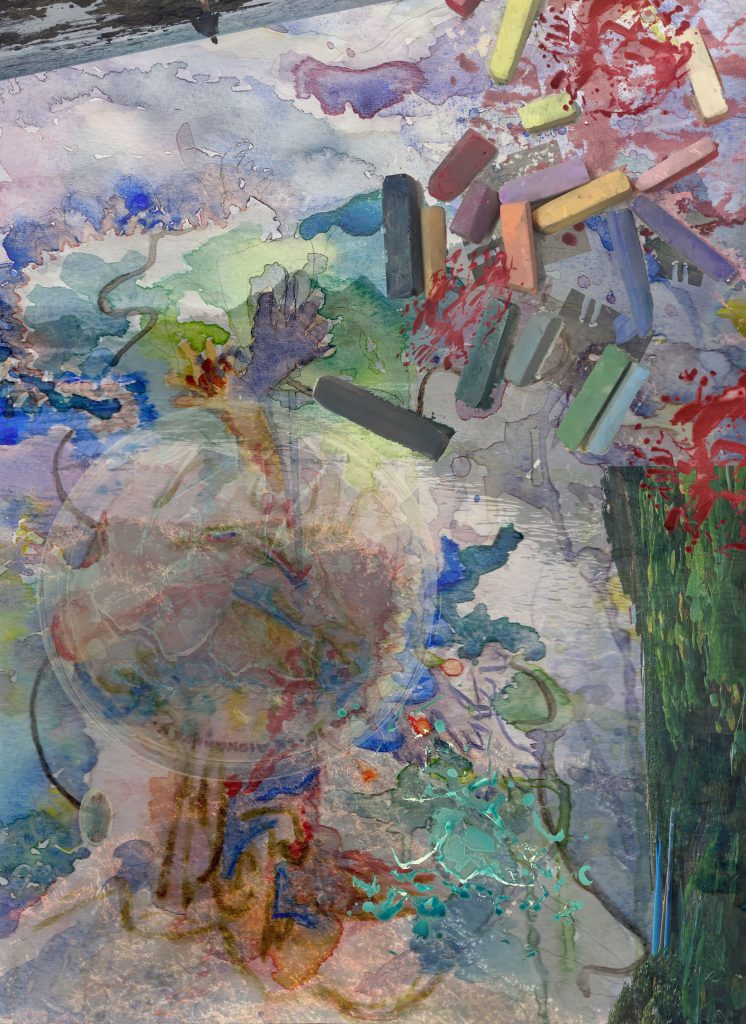
I enjoyed this project a lot it was really fun and a good way how to use layers and the tools on Photoshop. I wish Photoshop had more of a command Z usage like Illustrator does, but it is personally good to learn to not get used to the luxury of command Z to become more patient with technological applications. I tried and desired between using or not to use to the fill and brush tools, but I realized that because I wanted the composition to blend together instead of look like a more obvious collage that it needed to be minimalist. I am glad I got to blend an imaginary vision that somehow altered to fit some of my personal connections to the ocean.
Reusable and Subjective Waste ~ 1st Year
Final for Biology, Art, And Social Justice Lang Class
Reusable and Subjective Waste
By: Alexandra Vargas
I walk almost everywhere I go in the city, and through the different settings there is one link that keeps catching my attention: Trash and used objects. We pass by and lay out these objects on the street, which then they are seen as unuseful. Almost as if a lifecycle has ended it’s means. That kind of thinking prompted my first project at Parsons to be made with used materials that were available to be taken. That action then transferred to going onto the street collecting and picking up items to use them for majority of what I was making. I started to challenge myself and raise awareness in class to everyone that instead of resorting to buying new materials, we could find them. When carrying my art projects to class people would look at me oddly. Which gave me an idea to video tape Krystyanna picking up trash, myself spray painting what was collected, and then having my friend Caroline lay down on the street while Krystyanna dumped the trash on her. We got different reactions from the public, which than led me to the idea of how fashion is everywhere and how ironic it would be to make garments out of different used materials. I tested it out in one project, but then made it look like a normal garment. When on the street, people had no idea that it was used material and they treated it differently. So with this project I wanted to make it actually look like trash and make a garment with that kind of angle. Sustainable clothes are starting to be considered, but clothing ends up in a landfill still, so I wanted to intertwine/explore those contrasting ideas together[1]. The production of clothes wastes energy so I wanted to make this as a sculpture style. Also, seeing all the matter every day made me wonder what happens to the trash and objects in landfills[2].
“In 1937 first landfill brought inspiration to pass laws saying each state should participate in that action because before landfills people were dumping their trash into a pit. They thought that landfills would significantly help the United States, but actually it has tripled since the 60s because of the usage of biodegradable packaging versus nonbiodegradable[3] packaging[4]. This causes a problem because methane is released into the air, which harms the surrounding environment, and also plays a role in climate change. I decided to go online and research to see if the idea of trash leading to climate change and landfills were on others’ minds. I proceeded to an article from Time Magazine in 2012 that stated: “The higher numbers are especially significant because trash in landfills releases methane gas, a greenhouse gas that contributes to climate change. The Environmental Protection Agency (EPA) estimates that landfills are the third-leading cause of methane emissions in the U.S. Nearly a fifth of methane emissions come from landfills. Landfills utilize methane gas collection technology, but researchers say that methods should be improved at open landfill sites. Methane is the second most prevalent gas emitted by human activity following carbon dioxide. And, while Americans emit significantly less methane than carbon dioxide, methane emissions are 25 times more damaging to the environment, pound for pound, than carbon dioxide over a 100-year period.[5] ” I had heard of the term methane, but I wanted to know exactly what it was: “(CH4), is a gas produced by a group of colonic anaerobes, absorbed from the colon and excreted in expired air.[6]”
These statements then reminded me of Alexis Rockman’s art pieces and how he explores genetics, the future, and impact of the environment[7]. Alexis bluntly conveys his ideas to raise awareness, which is kind of linked to my idea of my garment. To put what is contributing harm in front of people, because it holds the idea where something adds up, until one realizes: we can see traces, but there are still invisible traces too.
I created two fashion pieces. I picked two materials that were about to become trash or were suddenly turned to look that way. The first garment was made out of trash bags that I took from the trash. I threw the trash that these bags were holding into other bags so there would be no extra littering involved. With this look I wanted to make four pieces that could be pieced together, or they could have the option to be styled with other articles of clothing. My original idea was to make a crop top, a strapless top, pants, and a skirt. Instead I made a crop top, a strapless top, I combined the pants with the skirt, and a shawl that could also be turned into a top or could be added to the skirt. I gravitated towards both the transparent and black garbage bags because I thought it brought contrast and also to the idea that it is creating waste to help reduce or get rid of unwanted items. I did not use a pattern, but instead ripped the pieces or cut them to fit them together into the item I desired. They were mended together by hot glue. For plastic when it was used like fringe it was cool to have the hot glue make the plastic curl and manipulate it. For the shawl I cut holes and tied knots with the black trash bag. Overall the process went well, my pants looked odd so that is why I took them apart and added them to the skirt.
For the second look, I used Trader Joe’s bags, because I realized how many bags we waste when we go shopping. For example: Trader Joe’s doubles the bags for items that could use one bag. Thus, I had four bags in total enough to make the dress and romper. Also the irony of needing that bag to carry things that keep you alive such as food and then to throw them out and then they are deemed as unuseful and as trash. That is why I chose to create a garment out of those bags used from when my roommates go shopping there. I decided to make a dress and romper in one. I started to form a body suit out of the paper bags once again without a pattern, then my friend told me she wanted to model it so I measured her body to make sure that I could fit it on her. From there I made the skirt by cutting out strips of the paper bag and gluing them together, and everything was hot glued once again. Then I got a cardboard box and striped it and cut pieces of that certain texture and put it on the back of the romper/dress, sleeves, and the skirt. Both garments are structured more as a sculpture to showcase the more art side of how trash can be reused and seen as. The reason why I choose fashion is because fashion is a way of expression and I thought it would be ironic to have people wearing a fashion pieces as trash that they pass by every day without thinking subconsciously. I also thought if someone would to wear literal trash then it can raise awareness. I also chose to covey the process through fashion photography so even in an editorial story this could be used for that purpose.
Process:
Final Piece:
As for my schedule, I paced myself by to create these two garments. I allocated a few days towards one and a few days towards the other which totaled to two weeks. Then I took photos and video, wrote my reflection, and the artist statement when listening to other classmates present on the third week. For the photoshoot, I choose to shoot at Chelsea Market because it has a modern yet old, new, industrial, and local vibe. We asked people to write a word that described New York City to them on the dress with acrylic paint. As for the dress made out of trash bags, another photoshoot was done around Wall Street. I wanted to see how my friend would self express her style with the trash bag. My friend paired her style that has a lot to do with nature in such an industrial setting. She wore leggings and hiking boots with the dress, skirt, sleeveless top, and crop top.
Chelsea Market and The Standard Hotel:
- makeup inspired by methane
Wall Street:
Reflection:
For the photo shoot, it did not occur to me that there would be mostly tourists there, and so people would either approach us or give weird looks while walking by. It made me realize different levels of comfort and openness that we all have. A lot of young kids got more into it and they just went for it on the dress, where as adults felt weird or if they went for it they thought hard thought about each mark they were making. It was funny because they didn’t want to mess up the work I made, but in retrospect they are throwing away the work when they buy the stuff that was put inside of it. Some people recognized it as a trash bag, and a ton of pictures were taken. I realized that maybe the idea of having people pass and give weird looks was completing the notion I wanted. Overall the experience of seeing how the garments interacted with the settings and public was interesting. I was not too crazy about my designs, so the act of choosing the design became more like a study of how the materials can be folded and formed into different pieces of clothing. I asked Trader Joe’s why they double bag, and if it was a requirement too. They said that it was not but the reason why they do is because the handles are not strong enough. That response was odd to me because I carried my garment as a heavy snowfall was happening and it barely ripped. Their bags are quite sturdy, which puzzles me towards their response, or even the design of the bag.
The class presentations were really fun. I liked hearing and seeing my classmate’s interests and ideas. All the ideas that the presentations held unique expressions that were different from each other. Kind of like another angle of how Madison was saying that everyone is unique in her art critique. At the same time the material presented had some common links that could be made. Maria, Destiny, and Juliet all linked their ideas to togetherness and not presupposing. That there is unity. Also the process of the projects was interesting, I witnessed seeing Krystyanna and Makaleh in the process of making their projects and it taught me new approaches of ways to brainstorm and articulate while making a piece. I loved the experimentation that our class had as well. Miranda played around with water. This was cool because Miranda was using a material that was her subject line as well, which reminded me of how Jenifer Wightman studied bacteria but made it into an art piece.[8] Also, Daryn had the people who read her character’s voice encountering the story for the first time to see what their reaction would hold. Phoebe’s talk about organ sharing was fascinating to be educated about, and her piece also tied to one of the subjects Daryn held, which was accessibility. When thinking about how teaching each other through presenting art, Alyssa and Ani brought the materials they used for their project so the class would get a kinetic understanding. They both also used textiles to convey the subject that they were passionate about while lessening certain stigmas. I thought how Candida took a lab and furthered it into her project was cool, and how Ethyn took his passion of plants and tied into the work of Kahlo, which in his act of doing that presentation and research almost alluded about how to go about looking to an artists’ work when we focused on Kahlo this year. Overall I learned a lot from everyone, and gained many new outlooks. This project really helped me try to spread the message about the effect littering and waste is bringing towards climate change and the surrounding environment. Also allowing me to raise awareness of how we can make change and think of futuristic ideas to raise awareness and lessen stigmas as well as waste.
As for my own work I think I should have stated more facts and gone more in depth. I truly enjoyed working on the pieces and I learned more about certain kinds of reactions in public spaces and was educated more about landfills. I think through hearing feedback and seeing how my peers went about their research made me want to further the idea of waste and fashion coming together. I would like to make cloth-like material from decomposed trash to help eat up the waste that is being produced in the landfills and what is being tossed into the ocean. Once that cloth is made I can express myself in a new way, not just sculpturally. I feel that is what a lot of the class did. They took their passion and experimented with it to share a message.
Footnotes:
[1] Rob Walker, “Fashion in new bid to be truly sustainable,” The Observer, April 08, 2017, https://www.theguardian.com/fashion/2017/apr/08/fashion-sustainable-clothes-wwf-finland.
[2] “Landfill: not to composed trash so it breaks down quickly or bio degrades but to burry it, dirty it and lock it from the surrounding world. They isolate the trash from the environment.” Josh Clark, “How Landfills Work,” How Stuff Works (audio blog), June 23, 2015, https://science.howstuffworks.com/environmental/green-science/landfill.htm.
[3] Non-biodegradable packaging consists of plastic aluminum and Styrofoam.
[4] Clark, How Stuff Works.
[5] Justin Wordland, “Trash Climate Change Methane Gas:,” Time, September 22, 2015, http://time.com/4042559/trash-climate-change-landfill/.
[6] “Methane,” National Center for Biotechnology Information. PubChem Compound Database, https://pubchem.ncbi.nlm.nih.gov/compound/methane#section=Top.
[7] Rachel Corbett, “Painter Alexis Rockman on His Dire Eco-Dystopian Visions,” Artspace, September 10, 2013, accessed December 11, 2017, https://www.artspace.com/magazine/interviews_features/studio_visit/studio_visit_alexis_rockman-51528.
[8] Jenifer Wightman, Winogradsky Rothko: Bacterial Ecosystem as Pastoral Landscape. Journal of Visual Culture. 7(3): 309-334, 2012.
Bibliography:
Clark, Josh. “How Landfills Work.” How Stuff Works (audio blog), June 23, 2015. https://science.howstuffworks.com/environmental/green-science/landfill.htm.
Corbett, Rachel. “Painter Alexis Rockman on His Dire Eco-Dystopian Visions.” Artspace. September 10, 2013. https://www.artspace.com/magazine/interviews_features/studio_visit/studio_visit_alexis_rockman-51528.
“Methane.” National Center for Biotechnology Information. PubChem Compound Database. https://pubchem.ncbi.nlm.nih.gov/compound/methane#section=Top.
Walker, Rob. “Fashion in new bid to be truly sustainable.” The Observer. April 08, 2017. https://www.theguardian.com/fashion/2017/apr/08/fashion-sustainable-clothes-wwf-finland.
Wightman, Jenifer. 2012. Winogradsky Rothko: Bacterial Ecosystem as Pastoral Landscape. Journal of Visual Culture. 7(3): 309-334.
Wordland, Justin. “Trash Climate Change Methane Gas:.” Time. September 22, 2015. http://time.com/4042559/trash-climate-change-landfill
